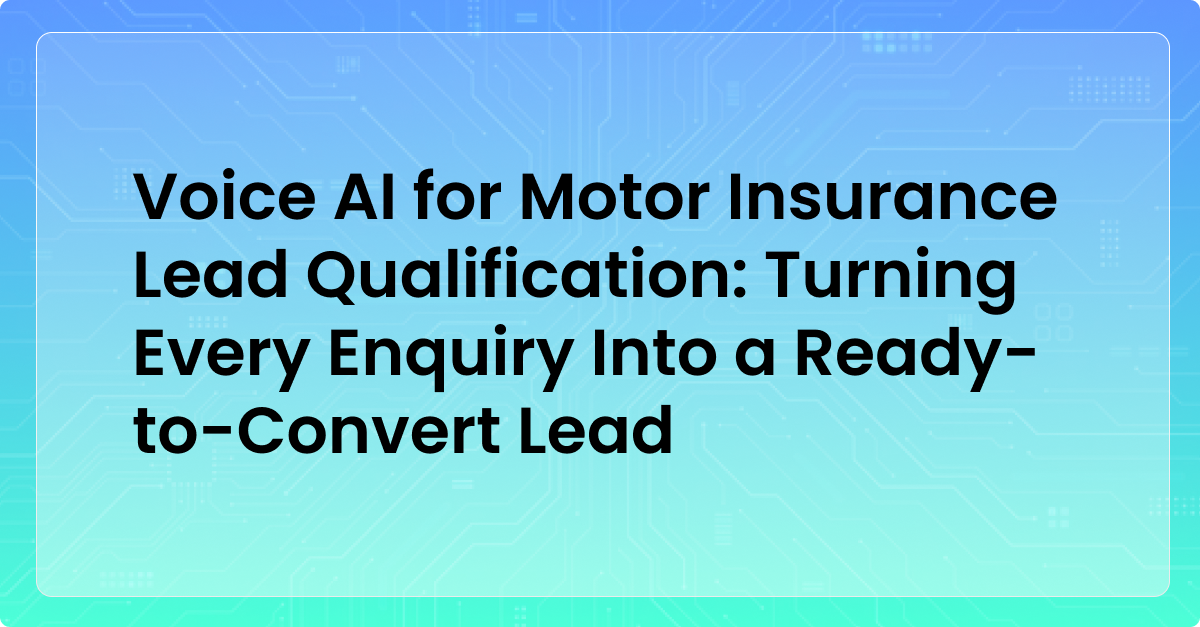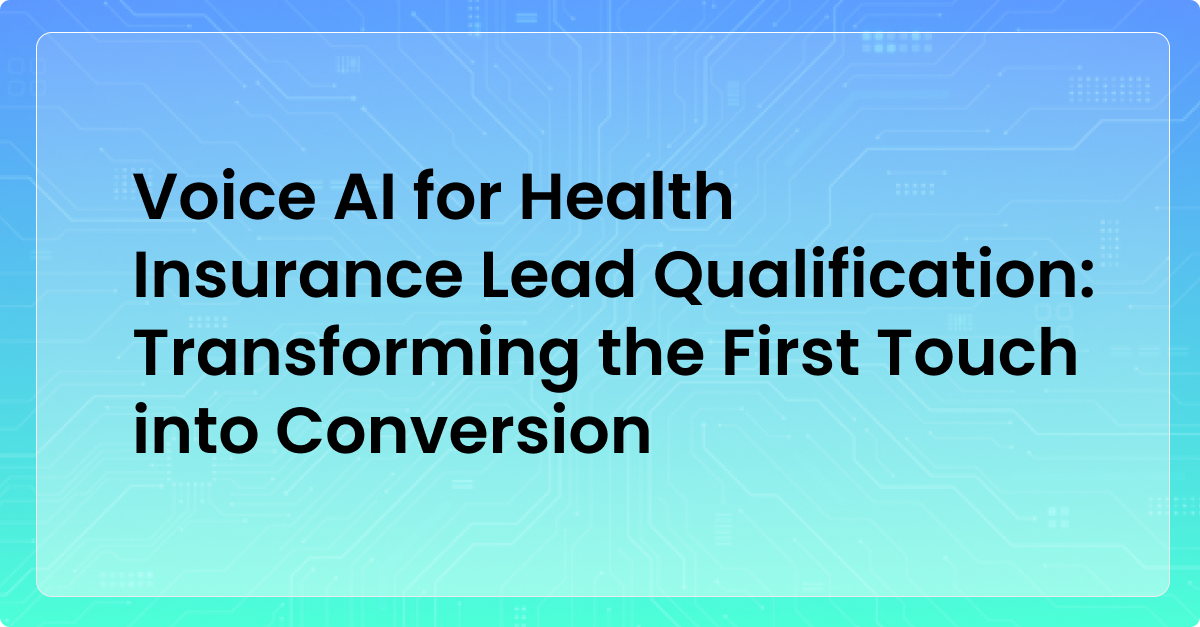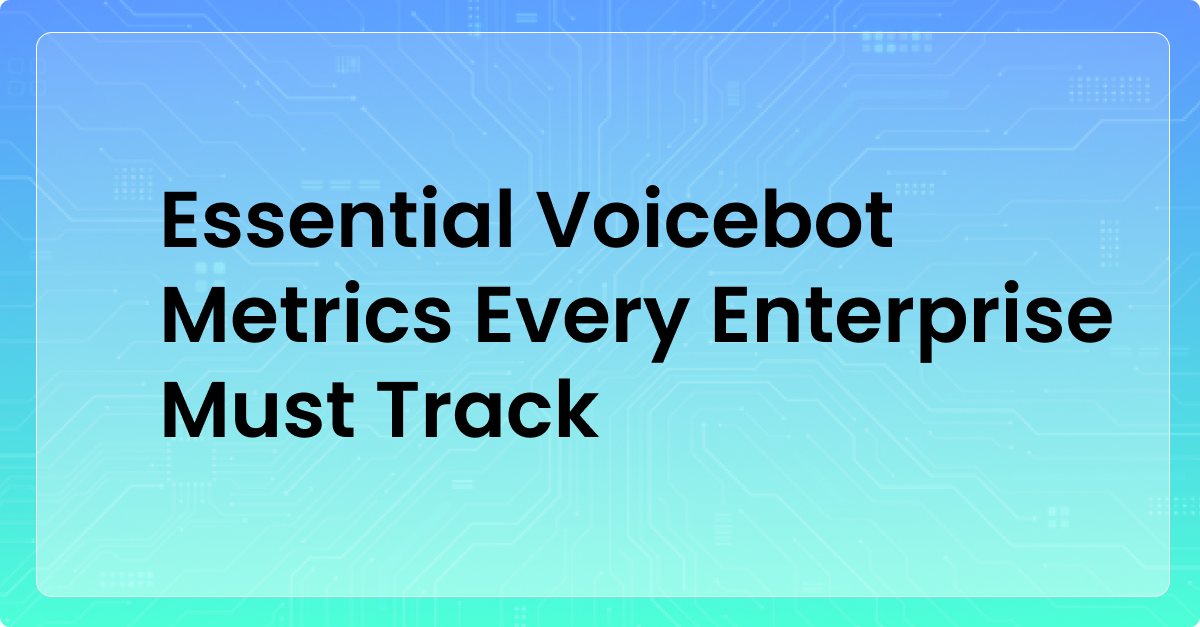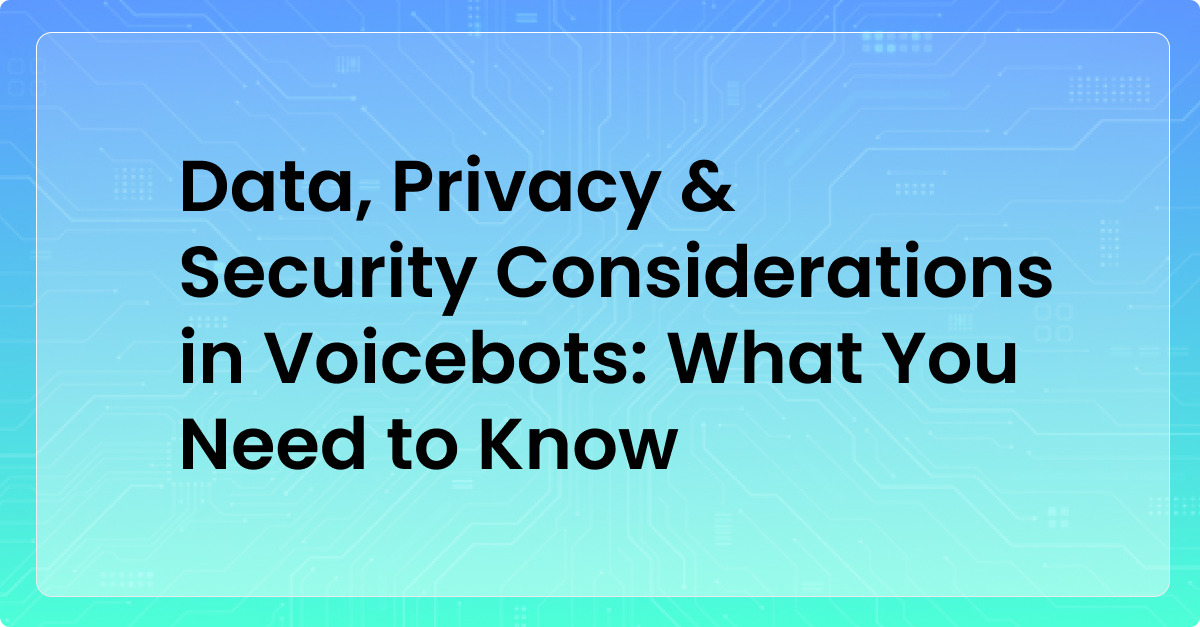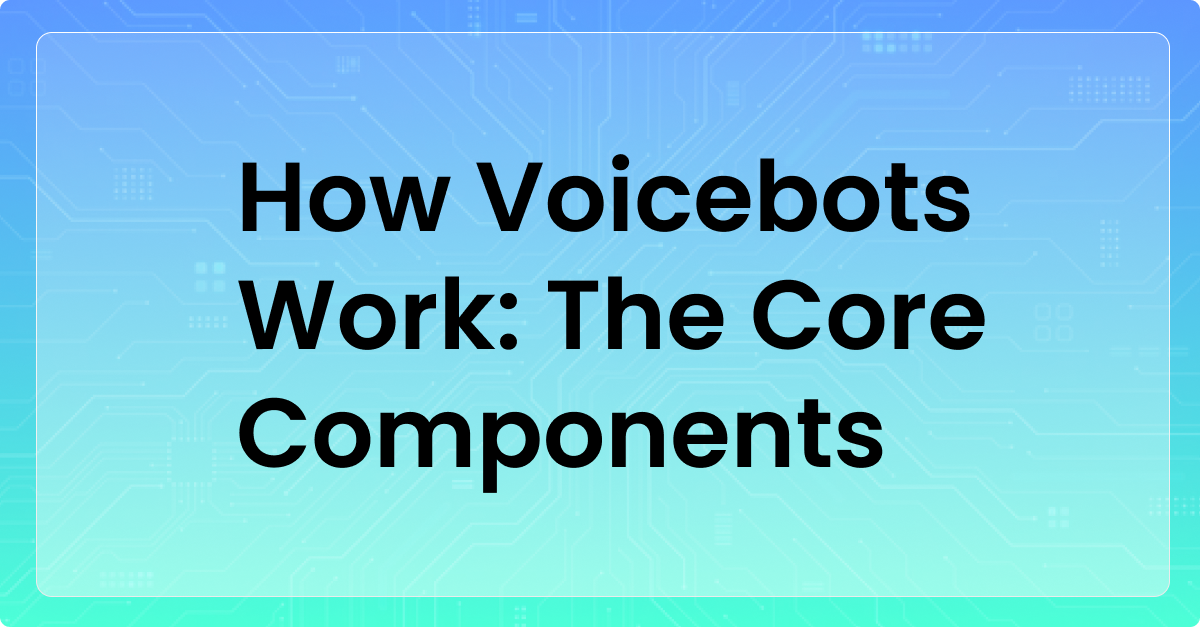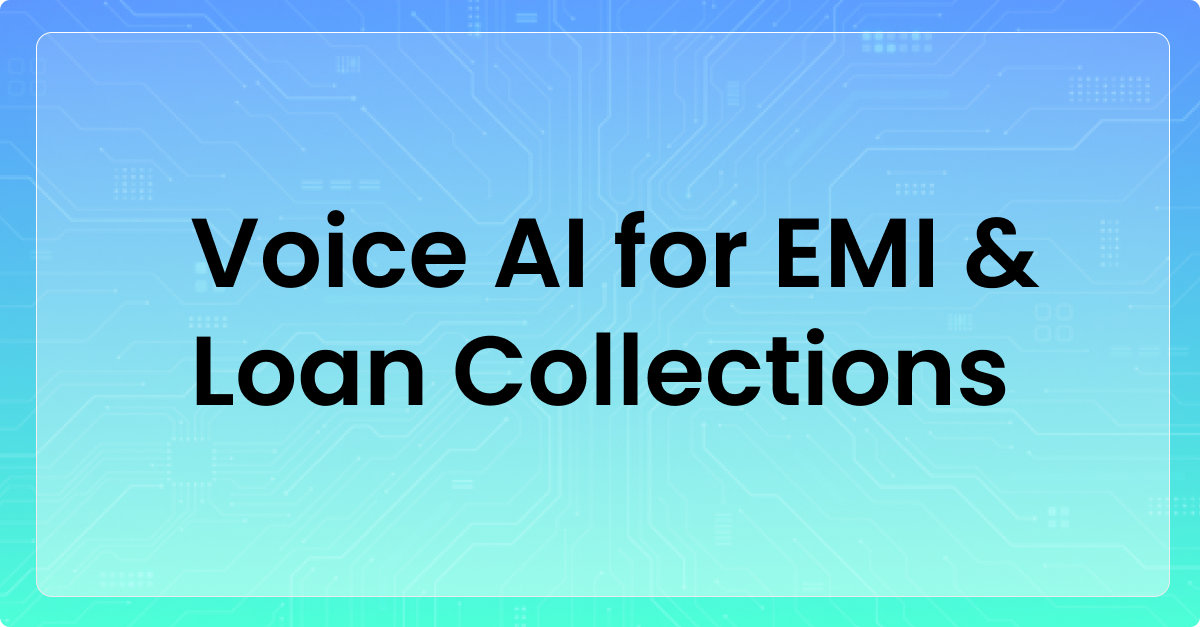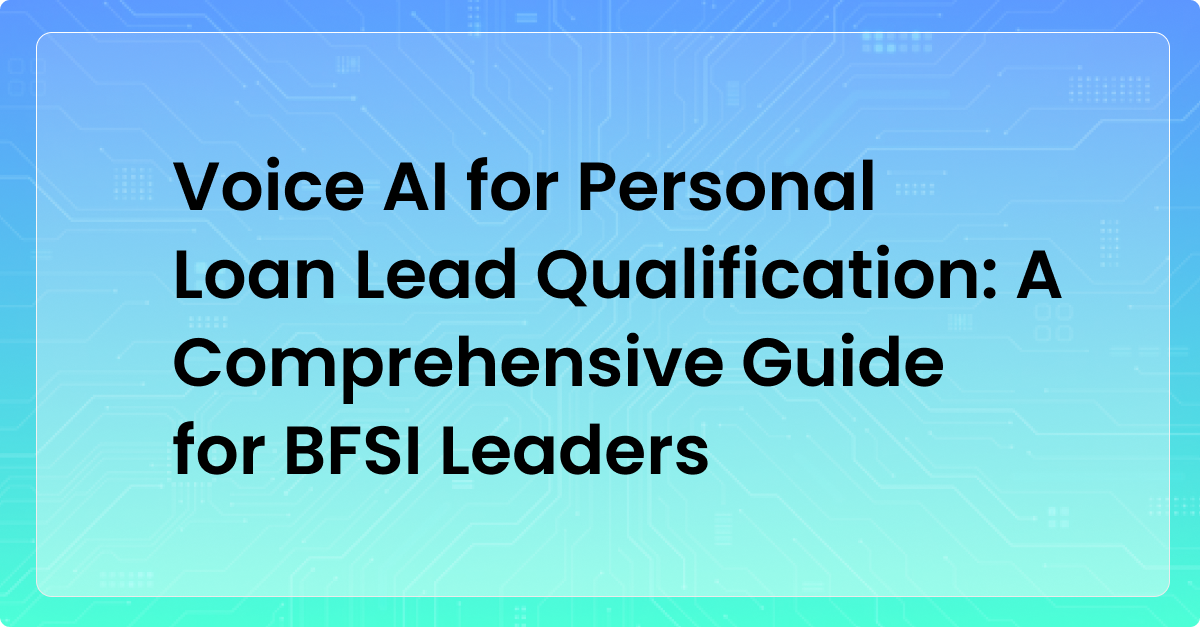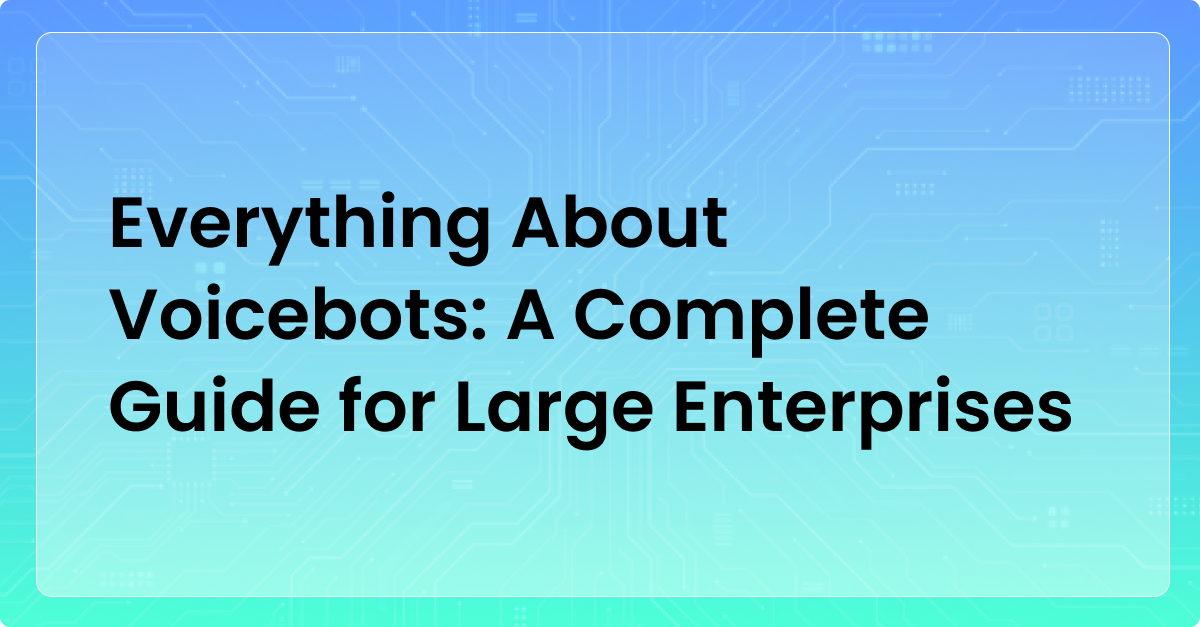Credit cards are one of the fastest-moving financial products, but also one of the most competitive. Customers compare benefits, rewards, joining fees, cashback, and approvals instantly. For banks and credit card issuers, the biggest challenge is qualifying leads quickly and routing only serious applicants to sales teams.
This is where Voice AI steps in. It transforms raw credit card enquiries into ready-to-convert applications with instant responses, consistent questioning, and personalised conversations.
In this blog, we will explore how Voice AI works specifically for credit card lead qualification and sales: why it matters, how it boosts conversions, what a real workflow looks like, what metrics to track, and what pitfalls to avoid. Whether you handle credit card sourcing, telesales, digital acquisition, or outbound operations, this guide will give you complete clarity.
Why Lead Qualification Matters in Credit Card Sales
Credit card buying behavior is fast and decision-driven. Customers usually compare multiple cards at once and expect:
- speedy responses
- clarity on eligibility
- transparent benefits
- personalised recommendations
Most credit card enquiries are triggered by:
- salary upgrades
- new-to-credit applicants
- reward point seekers
- travel benefits
- pre-approved offers
- credit card upgrades
- balance transfer interest
If you delay your first call or ask irrelevant questions, the user may already have applied elsewhere. Many banks report that high-intent prospects lose interest within 10 to 20 minutes if no one responds.
Sales teams often struggle with:
- high call volumes
- repeat questions
- lead leakage
- low connect rates
- spending time on unqualified prospects
The objective is simple: filter quickly, route smartly, and focus human effort on serious applicants.
What Voice AI Means for Credit Card Lead Qualification
Voice AI uses ASR, NLU, and dynamic scripts to interact with leads and understand their needs. In credit card sales, a Voice AI agent can:
- Confirm personal and professional details
- Assess eligibility factors like income, employment type, age
- Understand interest: cashback, travel, fuel, lifestyle, premium cards
- Check for pre-approved offers
- Identify urgency
- Gather documentation readiness
- Detect intent through tone and responses
- Route high-intent prospects instantly to agents
- Log everything automatically in CRM
For example, if a user says “I want a card urgently for an upcoming trip”, the Voice AI marks the lead as high-priority and routes it immediately.
This ensures no interested buyer falls through the cracks.
Why Credit Cards Require a Specialised Voice AI Flow
Credit card qualification is more complex than standard lead qualification. A strong Voice AI flow must evaluate:
1. Eligibility Criteria
- Monthly income
- Employment type (salaried, self-employed)
- Company type
- Credit history
- Age bracket
Voice AI can identify these in seconds.
2. Intent Type
Customers often look for specific benefits:
- cashback
- travel points
- lounge access
- low annual fee
- rewards
- fuel surcharge waiver
Understanding intent early helps in routing.
3. Pre-approved Offers
Some users already have:
- pre-approved credit limits
- upgrade eligibility
- card replacement offers
Voice AI can check offer categories and tag leads accordingly.
4. Existing Card Behaviour
Important questions include:
- Do you already use a credit card
- How many cards do you currently have
- Are you looking for an upgrade
- Do you want better rewards
5. Income & Documentation Readiness
This directly impacts qualification.
Voice AI can quickly verify:
- Salary slips
- Bank statements
- Employment proof
This helps filter non-eligible applicants early.
6. Urgency & Use Case
Some users need a quick approval for:
- travel
- shopping events
- EMI conversion
- business expenses
Voice AI identifies urgency and assigns priority.
7. Compliance Requirements
The script must ensure:
- identity verification
- consent
- correct disclaimers
- accurate data capture
This helps avoid compliance issues later.
Sample Workflow: Voice AI for Credit Card Lead Qualification
Here is how a real Voice AI conversation flow works:
Lead Capture Trigger
User fills a form on the bank website, aggregator platform, SMS link, ad landing page, or gives a missed call.
Instant Voice AI Callback
“Hi, thank you for your interest in our credit cards. I will help you with a quick eligibility check. May I know your name?”
Qualification Questions
- What is your monthly income
- Are you salaried or self-employed
- Which type of card are you interested in such as cashback, travel, fuel, or lifestyle
- Do you have any existing credit cards
- Are you looking for an upgrade
- Are you applying for any specific reason today
- Do you have your basic documents ready
Lead Scoring
Voice AI evaluates:
- income fit
- benefit preference
- urgency
- documentation readiness
- tone and clarity
Leads are scored into:
Hot | Warm | Low Intent
Routing
- Hot leads – transferred to a credit card sourcing agent
- Warm leads – scheduled callback
- Low intent leads – nurturing journey
CRM Logging
Voice AI logs:
- customer profile
- preferences
- eligibility markers
- call transcript
- lead score
Agents get a complete summary before calling.
Key Benefits You Will See
Implementing Voice AI for credit card lead qualification creates measurable improvements across speed, quality, and conversions.
1. Instant Engagement That Increases Connect Rates
Credit card shoppers compare multiple issuers at the same time. Voice AI responds instantly, which helps you reach prospects before they apply elsewhere.
Many banks now aim for under 60 seconds, and faster engagement can improve connect rates by 70 to 80 percent.
2. Better Lead Quality Through Smart Eligibility Checks
Income, employment type, and documentation readiness are major qualification filters. Voice AI screens these within seconds.
Sales teams end up speaking only to leads who actually meet card criteria, improving qualified lead volume by 30 to 50 percent.
3. Reduced Calling Effort and Lower Cost per Acquisition
Credit card teams handle very large volumes of daily leads. Automating first-level screening reduces manual calls by up to 40 percent, cutting cost per qualified lead and saving hours of agent time every day.
4. Higher Conversions Through Faster Handoffs
When high-intent prospects are routed immediately to agents, approval conversations happen sooner. This improves conversion odds by 20 to 30 percent, especially for travel cards, cashback cards, and pre-approved offers.
5. Zero Lead Leakage Across All Channels
Website, social ads, aggregators, SMS links, WhatsApp campaigns, missed-call inflows — Voice AI covers every lead source 24/7.
No lead goes unanswered, which is critical in credit card sourcing.
6. Matching Users With the Right Card Category
Voice AI picks up intent signals such as travel, fuel, rewards, or premium benefits.
This allows agents to pitch the right card instantly, improving relevance and reducing drop-offs during agent conversations.
7. Rich Insights Into Consumer Behaviour
Voice AI captures sentiment, preferred card types, income brackets, common objections, and drop-off points.
These insights help marketing teams design better campaigns and improve targeting accuracy.
What Metrics to Track
To optimise performance, measure:
- lead response time
- eligibility pass rate
- lead to agent handoff time
- conversion rate of qualified leads
- cost per qualified lead
- drop-off questions
- agent feedback on lead quality
- customer satisfaction score
These metrics show how efficiently your Voice AI funnel works.
Implementation Considerations
Before deploying Voice AI for credit card qualification, consider:
- eligibility rules must be clearly defined
- income brackets should map to card categories
- NLU should detect benefit preferences accurately
- multilingual flows improve reach
- compliance scripts must be consistent
- CRM integration should push lead scores and preferences
- continuous tuning helps with accuracy and call completion
FAQs
Q: Can Voice AI qualify leads for different types of credit cards?
A: Yes. It can guide users for cashback, travel, fuel, lifestyle, premium, or co-branded cards based on their preferences.
Q: Will Voice AI understand income and employment details correctly?
A: Yes. With domain-specific training, Voice AI accurately identifies employment type, monthly income, and eligibility factors.
Q: Can the bot check pre-approved offers?
A: It can identify pre-approved indicators and route such leads to specialised agents or faster approval paths.
Q: Is the data collected by the bot secure?
A: Yes. All data is processed with encryption, secure storage, and consent prompts similar to banking workflows.
Q: Will customers trust a Voice AI agent for credit card information?
A: Customers appreciate fast and clear assistance. As long as the bot is transparent and polite, they trust it for the initial qualification.
Q: Can Voice AI reduce calling workload for credit card teams?
A: Absolutely. Automating first-level screening reduces manual effort and helps teams scale without extra hiring.
Q: Can Voice AI help match users with the right card?
A: Yes. By analysing preferences such as travel, cashback, or low-fee cards, Voice AI highlights the most suitable category for the agent to pitch.
Conclusion
For banks, credit card issuers, and digital acquisition teams, Voice AI is becoming a critical part of the sales funnel. It improves eligibility checks, reduces manual calling, speeds up routing, and ensures every high-intent user gets attention instantly.
At Oriserve, our voicebot and chatbot solutions already support lead qualification across financial services. Adapting these flows for credit card sales means faster lead engagement, sharper qualification, and more time for agents to focus on conversions.
If you want to experience how Voice AI can transform your credit card lead funnel, you can Book a Demo with Oriserve anytime.
And if you want to explore more about Voice AI, you can read our comprehensive guide.

